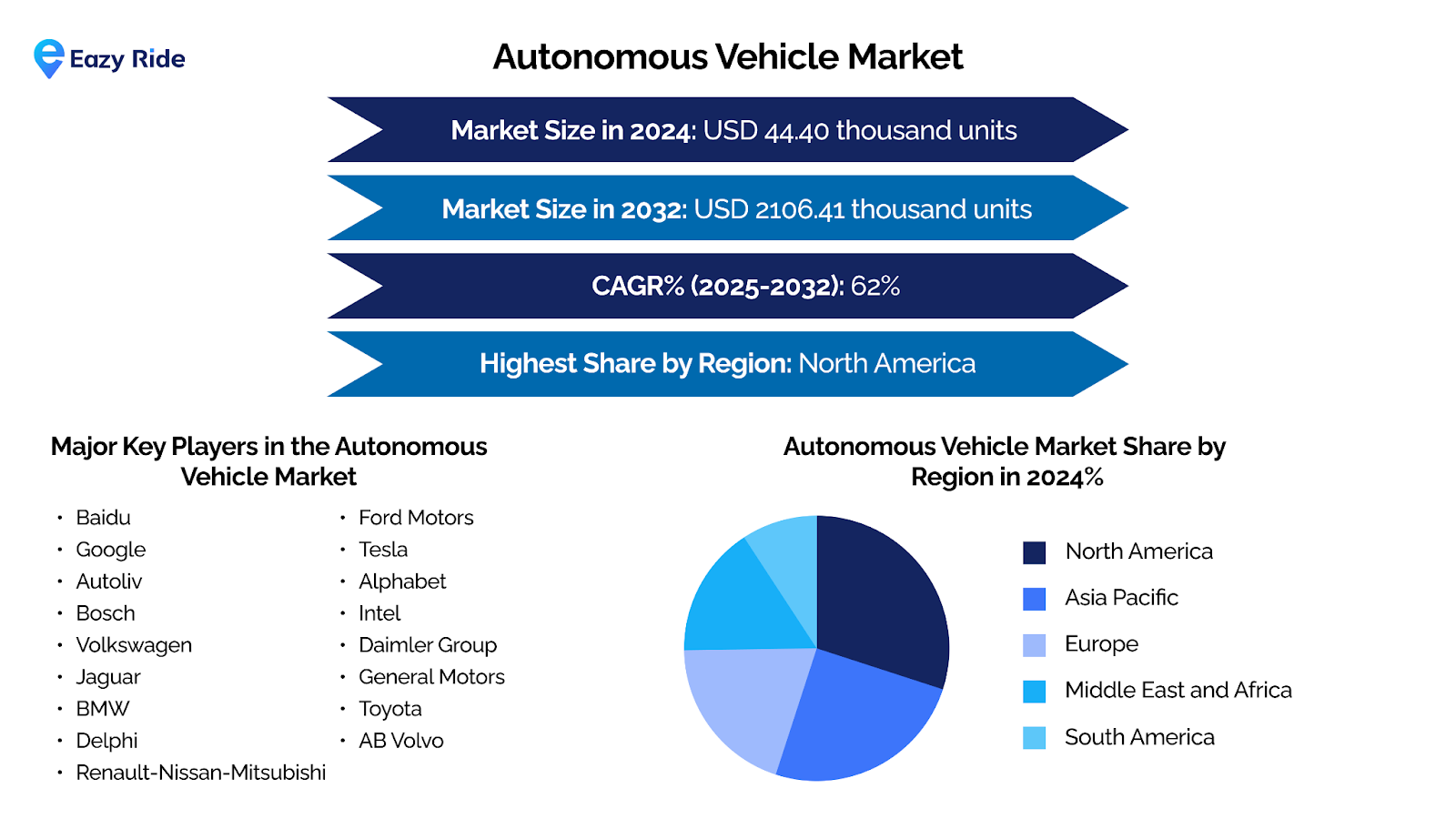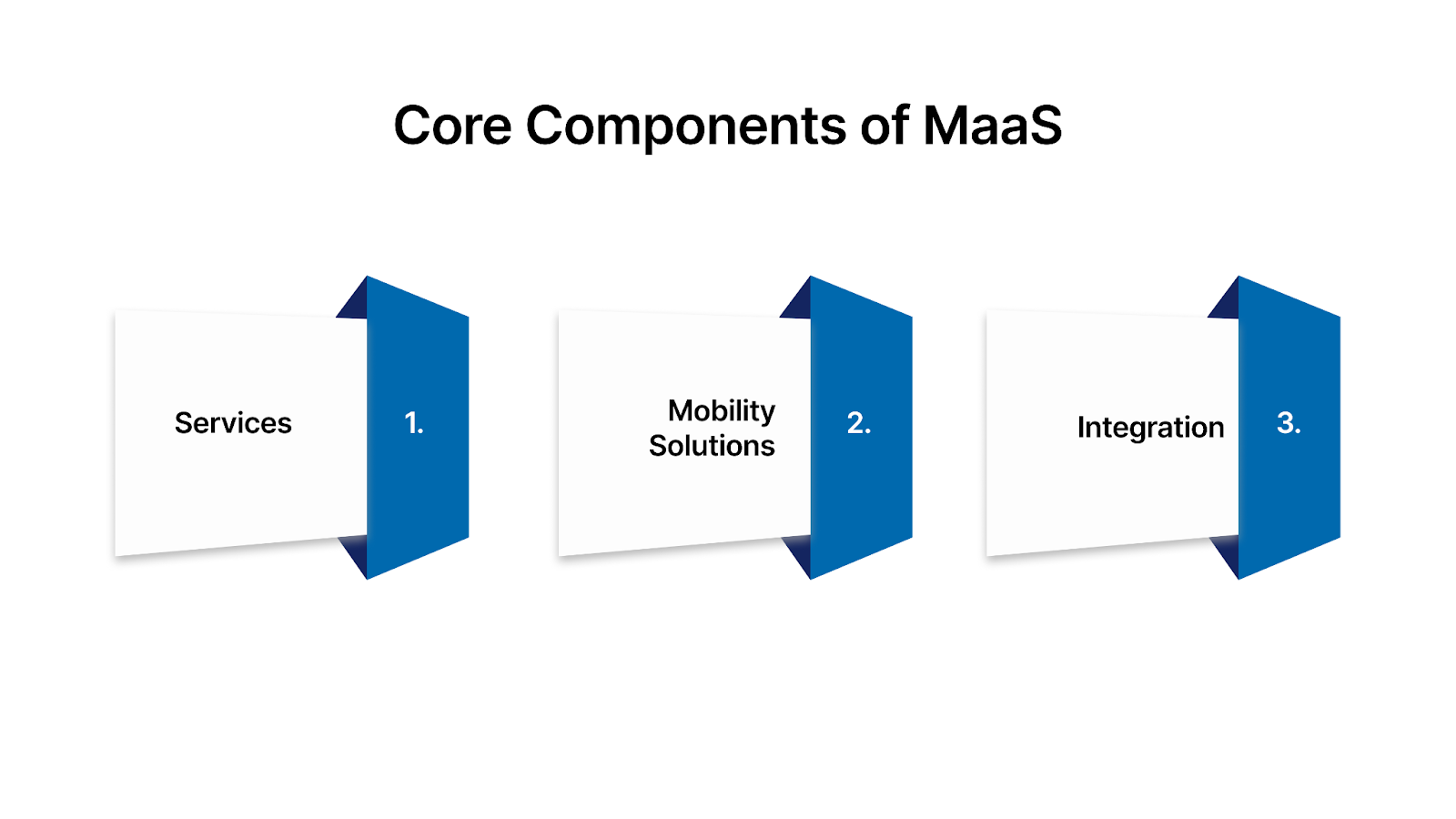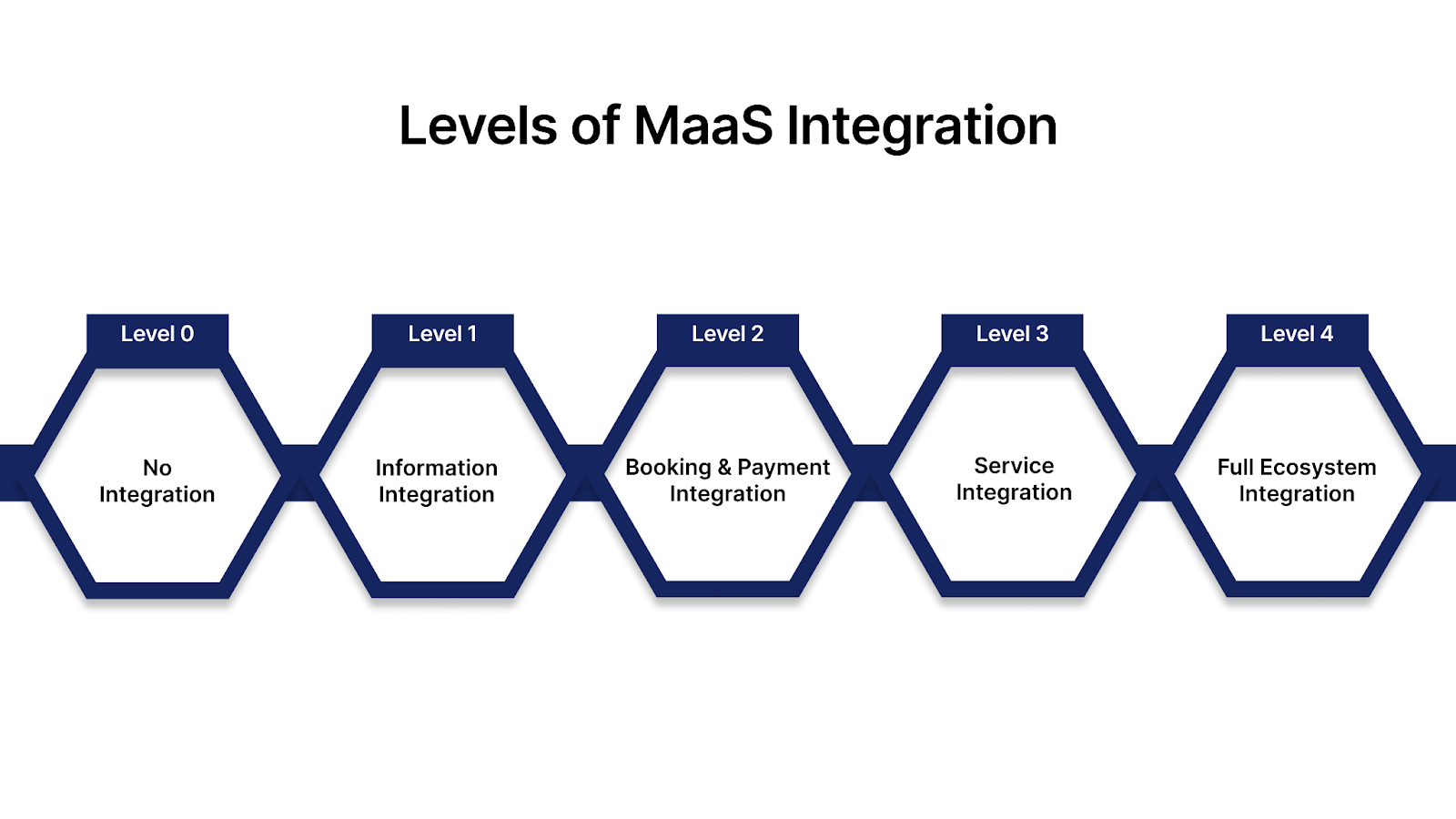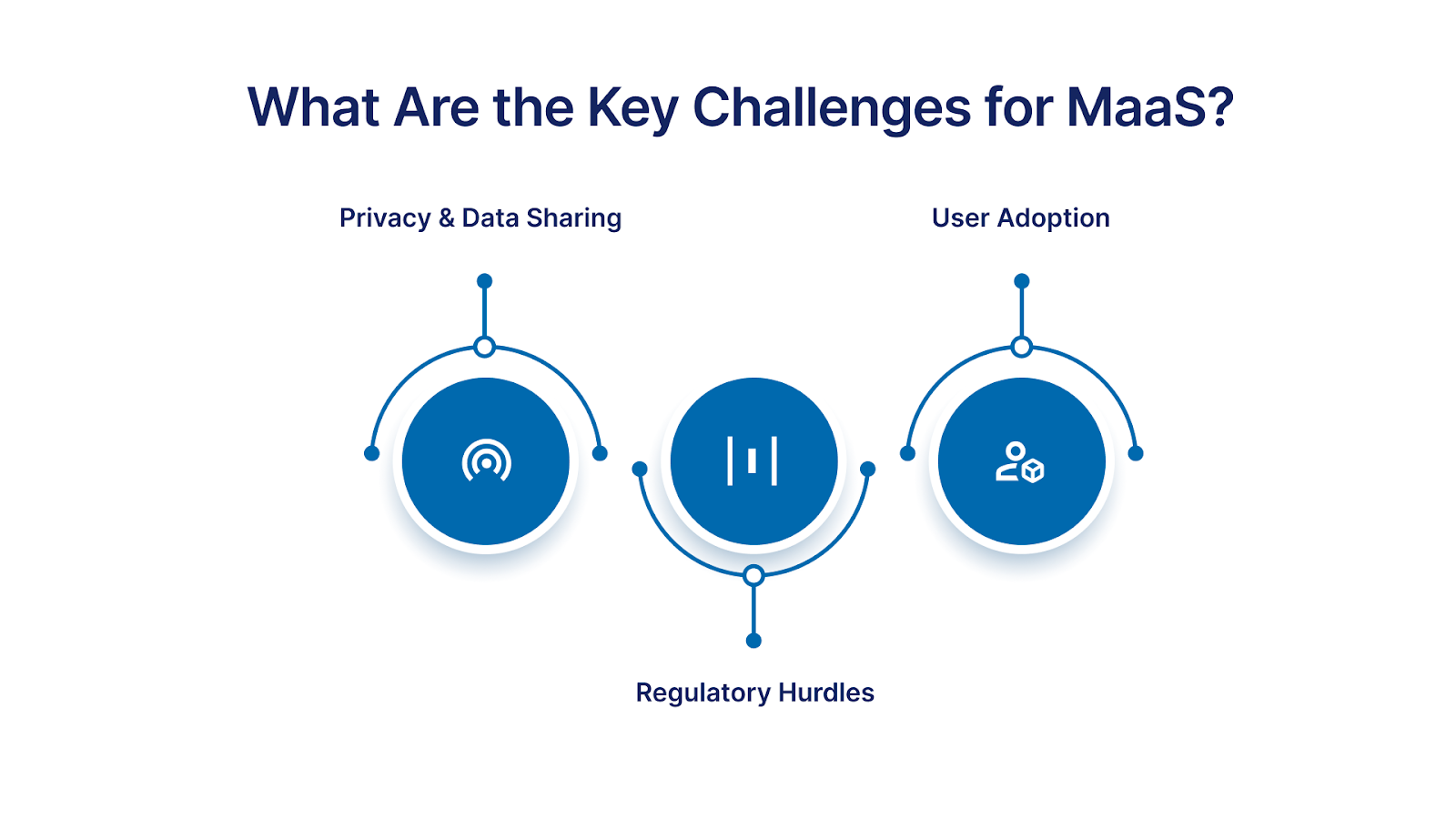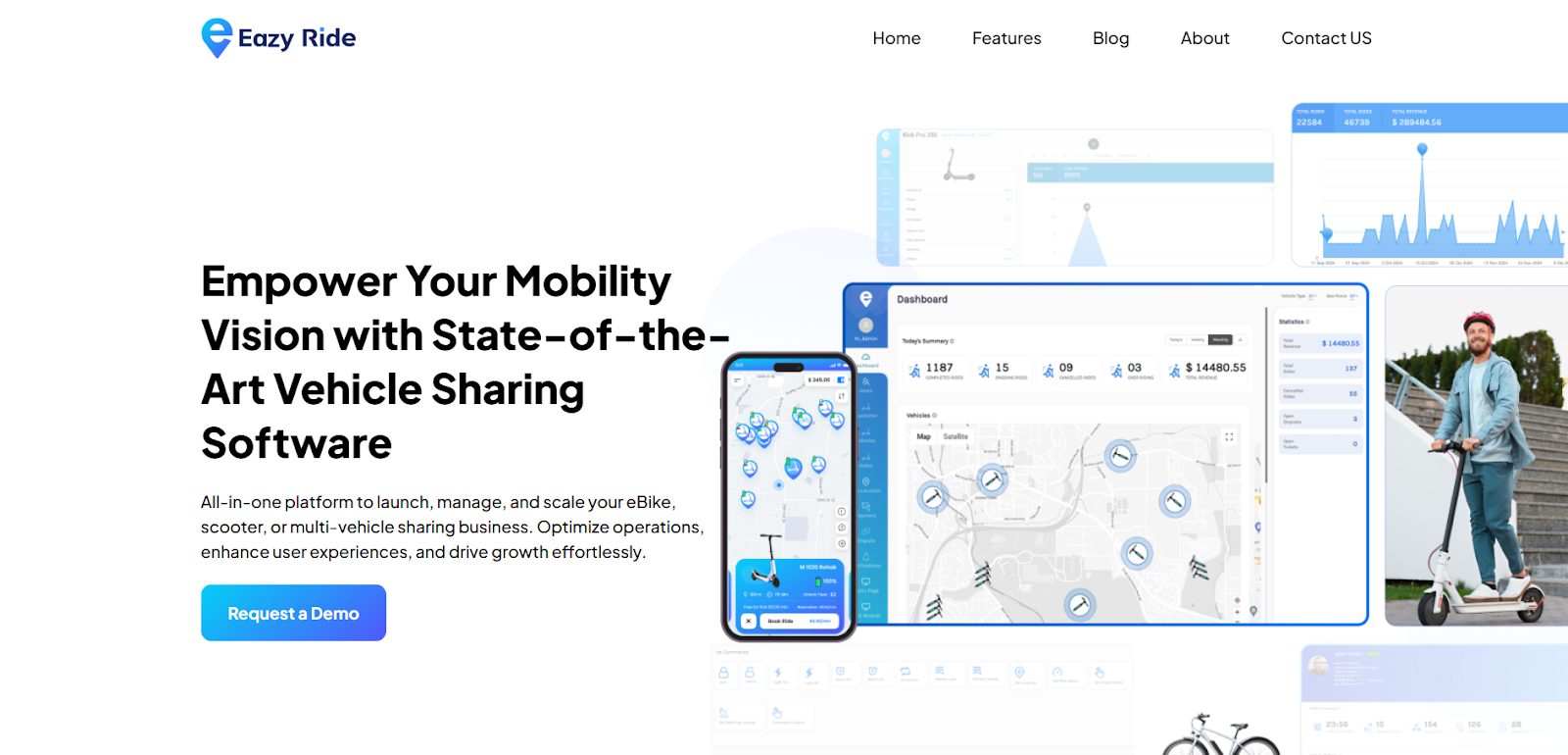 AllMicro Mobility Model
AllMicro Mobility Model
Understanding Mobility as a Service (MaaS) as a Fleet Manager
Are you providing what riders want? As fixed routes are fading. Personal vehicles are becoming a burden. Today’s users want on-demand, app-based mobility, fast, flexible, and right at their fingertips.
From corporate parks to gated communities and transport hubs, fleet operators are under pressure to deliver smarter, more agile mobility. And it’s not just about moving people. It’s about staying competitive. The real question? Is your fleet ready to scale with this demand, or risk being left behind?
By 2030, self-driving vehicles will make up 25% of Mobility-as-a-Service (MaaS) rides in North America. The autonomous vehicle market was valued at 44.40 thousand units in 2024. It is projected to grow rapidly at a rate of 62% between 2025 and 2032, reaching nearly 2,106.41 thousand units by the end of that period. That momentum shows no sign of slowing. It brings transit operators, rideshare providers, and micro-mobility solutions into a unified ecosystem.
In this blog, you’ll explore how MaaS works, its core components, and how new providers in the market enable fast, flexible deployment at scale.
What is Mobility as a Service (MaaS)?
Most transportation networks operate in disconnected systems. Public buses, ride-hailing services, rail, and micro mobility often lack coordination, both operationally and digitally.
This results in inefficiencies, underused assets, and poor rider experiences for cities and service providers. That’s where a unified approach becomes essential.
How mobility as a service works
- Integrates multiple transport modes, public and private, into one digital interface
- Refines route planning, bookings, payments, and user management
- Allows service providers to offer a frictionless mobility experience to end users
Instead of managing separate tools for each fleet or mode, operators gain one scalable platform. This improves multimodal coverage and transport equity for municipalities. For startups and private providers, it reduces go-to-market time and technical overhead.
Important Benefits of MaaS
As integration deepens, the advantages of mobility as a service become clearer for all stakeholders involved. The impacts stretch from individual users to city governments and businesses that power and support these systems.
- For Users: Users enjoy significant cost savings through bundled pricing and access to multiple transport modes without owning a vehicle. Convenience increases with payment and route planning in one app.
- For Cities: Cities benefit from improved traffic flow as MaaS encourages shared rides and public transit use, reducing single-occupancy vehicles. This supports environmental goals.
- For Businesses: Businesses find new market opportunities by integrating their services into MaaS platforms, expanding their customer base. Data-driven planning enables more efficient fleet management.
3 Key Components That Make MaaS Work
Research and Markets projects that the market will reach $351.73 billion by 2027, rising from $181.74 billion in 2023, with a CAGR of 17.9%. Transportation providers need a unified structure to build scalable, profitable, and user-focused services. The foundation of mobility as a service lies in these three components:
1. Services
- Users plan, book, and pay all in one app—no switching needed.
- A smooth experience builds rider trust and boosts adoption.
- Operators save time by automating routing and payments.
- Support costs drop with fewer manual tasks and better accuracy.
- Business clients onboard faster and get services more smoothly.
2. Mobility Solutions
- Supports buses, scooters, e-bikes, rideshares, and peer-to-peer rentals.
- Gives users more choices and meets varied travel needs.
- Boosts trip completion rates by covering first and last-mile gaps.
- Helps operators reach new markets and diversify revenue streams.
Eazy Ride supports docked, dockless, and hybrid models ideal for campuses, residential communities, or tourism hotspots.
3. Integration
- Connects APIs from transit agencies, payment processors, and fleet management.
- Requires a secure and reliable technology infrastructure.
- Enables real-time updates and efficient dispatching.
- Ensures consistent user data across systems.
- Supports analytics, regulatory compliance, and demand forecasting.
To build a commercially viable mobility as a service offering, you must understand the underlying features that make the entire system work.
What are the Features of MaaS?
As cities and service providers shift toward sustainable mobility models, it’s essential to understand what powers these platforms behind the scenes. A functional mobility as a service solution requires more than just a user-facing app.
MaaS implementation is the most studied topic, making up 32% of all articles from 2014 to 2020. This shows a strong research interest in turning MaaS concepts into real-world solutions.
It highlights the practical challenges of launching and managing MaaS across different regions. Find the following features of a MaaS:
Core Functionalities
- Provide live route planning to help users select the most efficient travel options.
- Improve trip fulfillment and increase operator responsiveness.
- Integrate booking and payment systems into a single, seamless interface.
- Reduce booking drop-offs and enhance customer satisfaction.
- Boost transaction volumes and simplify revenue tracking for businesses.
Technology Stack
- API integrations connect operators, vehicles, and systems to share data securely.
- They enable a seamless, unified experience across multiple providers.
- Without APIs, platforms struggle with fluidity and scalability.
- Users demand support for wallets, cards, and third-party payment processors.
- Secure, fast payment processing is essential for reliable revenue and customer trust.
MaaS Ecosystem Stakeholders
- Public transit agencies provide essential data and services that underpin many urban MaaS platforms.
- Collaborations with transit agencies enhance network coverage and help meet regulatory requirements.
- Private mobility providers, like ridesharing and micro-mobility companies, offer extra vehicle access.
- Partnering with private providers fills service gaps and broadens user options.
- These collaborations create commercial synergies benefiting all stakeholders.
However, the full benefits of MaaS will be revealed only when you understand the basics of mass integration on different levels.
Fleet Management: Understanding Mobility Platform Integration Levels
Mobility platforms evolve in phases, with each stage unlocking new benefits for fleet managers, operators, and riders. Recognizing these stages is essential for assessing your fleet’s current capabilities and future potential.
Level 0: No Integration
At this stage, transport services operate in isolation. There is no shared data, unified interfaces, or centralized booking tools. Fleet managers must handle each service independently, and riders must engage with each provider separately, leading to inefficiencies.
Level 1: Information Integration
Here, fleet managers gain real-time access to basic data, such as public transport schedules, traffic conditions, or rideshare availability. Although booking still requires manual interaction, this level provides insights that help fleet managers make more informed decisions. Data sharing begins to open the door for operational improvements.
Level 2: Booking & Payment Integration
This stage introduces a unified ticketing system, where users can book multiple transport modes (e.g., buses, scooters) in a single transaction. For fleet managers, this marks a key shift toward streamlining the rider experience and reducing friction, making mobility platforms commercially viable.
Level 3: Service Integration
Service bundling comes into play at this stage, allowing for the creation of pass options that include metro, bike-share, and ride-hailing services. This integration enables fleet managers to increase customer retention, diversify revenue streams, and offer more attractive services across the platform.
Level 4: Full Ecosystem Integration
In this advanced stage, mobility platforms offer a seamless, end-to-end user experience. Fleet managers can provide personalized travel recommendations, offer customized discounts, and optimize route planning. This creates a holistic, efficient mobility ecosystem that elevates both rider satisfaction and operational efficiency.
Now, it’s time to understand the real-world examples of MaaS. In this way, you will know how you can stay ahead of your competitors.
Current Examples of MaaS Solutions
The mobility as a service ecosystem includes various established models. Each plays a distinct role in delivering integrated, flexible transport solutions.
Ridesharing Apps
Peer-to-Peer Rental Services
Micro mobility
-
- Providers like Bird supply scooters and bikes for short-distance trips.
- They help solve last-mile connectivity and reduce urban congestion.
- Integration into MaaS platforms allows seamless transitions between transport modes.
It might seem amazing when you see a few companies thriving in the market, but do you know if those are without challenges? Unfortunately, not. What are those challenges you can expect as a fleet manager in MaaS? Let’s find out.
What Are the Key Challenges for MaaS?
While mobility as a service offers many opportunities, businesses and cities must address key challenges to unlock its full potential.
Data Sharing and Privacy
-
- Secure and transparent data exchange is critical. MaaS platforms rely on vast amounts of user and operational data, requiring top-notch privacy safeguards.
- Open data standards must balance accessibility with protecting sensitive information. Private and public entities often face challenges in integrating diverse systems and sharing data efficiently.
Regulatory Hurdles
-
- Inconsistent transportation regulations across different regions complicate service deployment. Legacy transit operators may resist MaaS initiatives that disrupt established models.
- Handling local policies and gaining regulatory approval requires coordinated efforts between stakeholders to create flexible, compliant frameworks.
User Adoption
-
- Gaining commuter trust in digital platforms is essential for widespread adoption. Shifts in user behavior take time, especially when moving from personal vehicle ownership to shared mobility models.
- Practical education, user experiences, and reliable service quality are key to encouraging consistent usage.
Understanding these challenges is the first step toward building a successful mobility service. To tackle them effectively, operators need to know how to create a platform that can scale MaaS solutions.
The Role of Software in Building and Scaling MaaS Solutions
When it comes to Mobility as a Service (MaaS), the software infrastructure behind it is just as critical as the vehicles that operate on the roads. MaaS platforms require scalable and flexible technology to integrate different transport modes, facilitate smooth user experiences, and support operational efficiency.
The Importance of Software in MaaS
Below are a few important things you might want to consider if you are starting to build a software solution:
Integration Across Multiple Providers:
- MaaS platforms rely on software to integrate various mobility services such as buses, trains, ride-hailing, micro-mobility, etc.
- A well-designed platform will connect these different transport modes seamlessly, ensuring users have a consistent and frictionless experience.
For fleet operators, this eliminates the need to manage separate systems, streamlining operations and reducing overhead.
Real-Time Data Management
- To improve rider experiences and operational efficiencies, MaaS platforms depend on real-time data. Software that supports real-time route planning, traffic data integration, and fleet dispatching is essential.
- This allows fleet operators to make quick decisions based on changing conditions, such as traffic, demand, or weather, and ensures the best possible experience for users.
Customizable User Experience
- The software enables personalization, allowing users to choose their preferred transport options, payment methods, and notifications.
- With AI-powered analytics, platforms can offer users personalized travel suggestions and discounts, boosting customer satisfaction and retention.
Security and Scalability
- As MaaS platforms handle large volumes of data, including payment information and user profiles, strong data security is vital.
- A secure and scalable software infrastructure ensures the platform can grow with increasing demand while protecting sensitive user information.
However, it’s not easy to rely on any available platform to build a reliable MaaS solution. For that, your go-to platform can be Eazy Ride. With advanced features such as AI-powered analytics, real-time data integration, customizable apps, and flexible fleet management tools, Eazy Ride provides a ready-to-deploy solution for businesses looking to enter the MaaS market.
How Eazy Ride Supports Seamless Operations for Fleet Managers
Eazy Ride provides a comprehensive, plug-and-play mobility platform designed to overcome common MaaS challenges. Its advanced features support seamless operations, regulatory compliance, and user trust.
- Secure Data Management: High-quality systems protect user privacy while enabling transparent data sharing.
- Flexible Geofencing & Zonal Control: Ensures compliance with local regulations through precise ride zones and speed limits.
- AI-Powered Analytics: Provides actionable insights to optimize fleet distribution and improve service quality.
- Customizable White-Label Apps: Builds user trust with branded, easy-to-use rider and operator apps.
- Rapid Deployment: Launch fully functional mobility services within two weeks, reducing operational complexity.
- Multiple Business Models Support: Offers docked, dockless, and hybrid fleet options to suit various urban environments.
Wrapping Up
Mobility as a service is changing how cities and businesses approach urban transportation. MaaS offers new revenue streams, operational efficiencies, and enhanced commuter experiences by integrating multiple transport modes, . However, addressing data privacy, regulation, and user adoption challenges remains critical.
Eazy Ride’s flexible, AI-driven platform offers businesses a ready-made solution for launching and managing shared mobility services effectively. With rapid deployment and easy-to-use features, Eazy Ride helps you overcome barriers and unlock the full potential of MaaS.
FAQs
1. What are some leading Mobility as a Service (MaaS) companies?
Top MaaS companies include Whim by MaaS Global, Moovit by Intel and Citymapper. These providers integrate various transport options like ride-hailing, buses, bikes, and trains into a single app, making urban travel more seamless and user-friendly.
2. Which apps are considered Mobility as a Service platforms?
Popular MaaS apps include Whim, Moovit, and Transit. These platforms let users plan, book, and pay for multiple transport modes from one app, enhancing convenience and connectivity in urban environments.
3. What is MaaS (Mobility as a Service)?
Mobility as a Service (MaaS) is a digital platform that combines different transport services, such as public transit, ride-hailing, car rentals, and bikes, into a single, on-demand system accessible via an app. It aims to replace private car ownership with flexible, efficient, user-centered transport.
4. How does MaaS as a service model work?
MaaS works by aggregating mobility options into a unified app. Users can plan trips, choose modes (like bus, taxi, scooter), and pay through a single interface. The goal is to provide customized, efficient, and sustainable transportation solutions with real-time data and subscription-based pricing.


